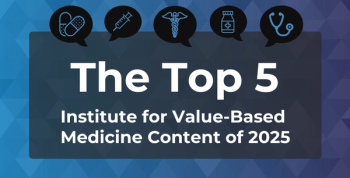Starting tthis week, women in California can get birth control pills at the pharmacy counter, without a physician prescription. In Oregon, women over 18 have been doing so since January. This policy strategy—adopting legislation that allows for pharmacist-prescribed contraception access for some hormonal methods (generally, pills and patches)—removes some barriers to access, but falls short of what evidence suggests makes the most financial and clinical sense: making effective contraception as readily accessible as possible to all sexually active women who wish to avoid pregnancy.
For example, the American College of Obstetricians and Gynecologists supports over-the-counter (OTC) access to oral contraceptive pills, along with many other countries, with positive effects on outcomes. In the United States, we have some unique barriers and constraints, as well as some unique opportunities to improve contraceptive access in order to reduce our costly and stubbornly high rate of unintended pregnancy.
The experiences in Oregon and California provide hope for overcoming political gridlock around contraceptive access; both legislative efforts were bipartisan, and Oregon’s bill was led by Republican legislator (and physician) Knute Buehler. However, women’s health advocates as well as some Democrats are concerned that these bipartisan agreements don’t go far enough to improve women’s access to contraception, highlighting both the politics at play as well as the evidence supporting easier access than currently-enacted legislation allows.
While the current efforts underway in Oregon and California have the potential to reduce rates of unintended pregnancy and abortion, they may also reduce healthcare costs through efficiency gains. That is, allowing women pharmacy access to birth control means that physician time and resources are freed up to focus on the myriad other unmet primary care needs.
Barriers to Accessing Contraceptives Not Covered by the New Laws
Yet, the laws don’t reduce access barriers for all forms of contraception. Some of the most effective birth control methods are long-acting reversible contraceptives (LARC), including intrauterine devices (IUDs) and birth control implants, which cannot reasonably be made available OTC but do have other modifiable access barriers. The use of LARC holds great promise for both individual and population-level efforts to reduce unintended pregnancy.
Indeed, a recent vox.com article highlights the “IUD revolution,” and notes the considerable success of efforts to increase LARC access via massive efforts to increase IUD use in Colorado, Delaware, Texas and beyond. Reporter Sarah Kliff described 3 key barriers to access:
- LARCs are expensive and can cost $500 or more
- There are lots of widespread misconceptions about IUDs and implants
- It’s often difficult to find a clinic with the skilled personnel and supplies to provide LARCs.
While the Affordable Care Act (ACA) was supposed to guarantee access to contraception at no out-of-pocket (OOP) costs, taking care of the first barrier, the reality has not lived up to the letter of the law. The last 2 barriers are also pervasive.
Women's Experiences and Overcoming Barriers
In a follow up to her initial article about IUDs, Kliff shared her own experience and readers’ reports of the challenges they faced in accessing IUDs. These stories reveal the lived realities that contribute to the high rates of unintended pregnancy in the United States, and describe how women’s efforts to access effective contraceptives continue to be undermined by barriers within the healthcare financing and delivery systems, in spite of policies intended to improve contraceptive access.
My own story is similar to Kliff’s and those who wrote to her. When I first sought out an IUD in 2004, I had a difficult time finding a clinician that would provide this method. My primary care provider would not provide an IUD for a woman who was unmarried and had not had children, in spite of evidence indicating that this method was both safe and highly effective for women like me. She referred me to an obstetrician-gynecologist, who also refused to provide this method for the same reasons. As a researcher in this field, armed with peer-reviewed publications and clinical guidelines, I was frustrated that my access was denied by clinicians whose reticence was based on history and anecdote, rather than best practices.
More recently, in 2015, in the post-ACA era, when contraceptives are ostensibly available without cost sharing, I paid $100 in OOP costs related to the 2 visits required by my clinic (but not based in evidence) for an IUD insertion. Standing at the check-in desk before my appointments, I argued weakly, bringing up the ACA language on my smart phone, but the administrative assistant that was tasked with collecting fees told me that she was not authorized to exempt me from the hefty co-payment. She suggested I call my health plan. I handed over my credit card and sighed. I did call my health plan, but—more than 6 months later—I have not made any progress toward recouping those costs.
The barriers Kliff and I faced, and those faced by women with more limited resources and knowledge, represent a failure of our healthcare financing and delivery system to provide easy access to evidence-based contraceptive care that is cost effective. Who pays the price for these failures? We all do—most especially the women whose quest for contraception ends in frustration, or worse—in unintended pregnancy.








































